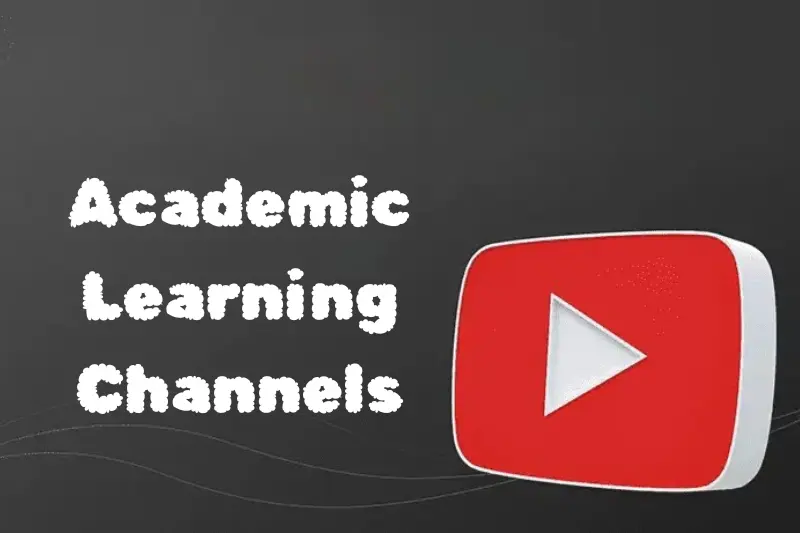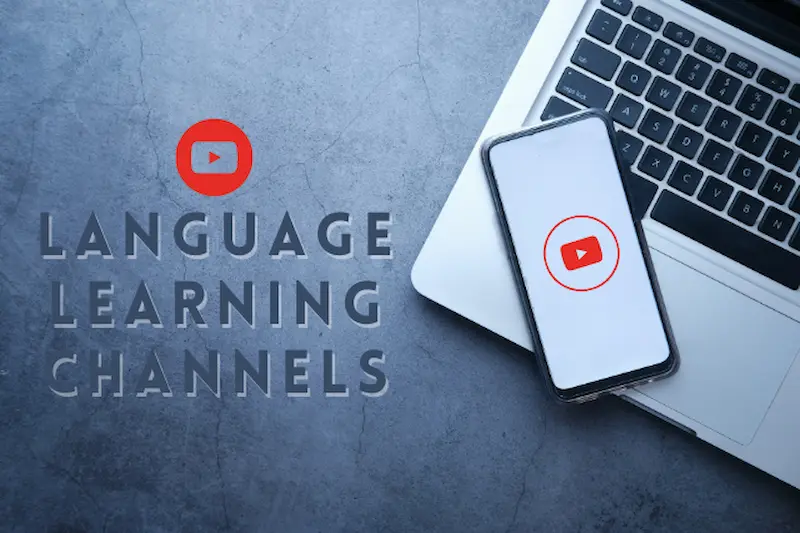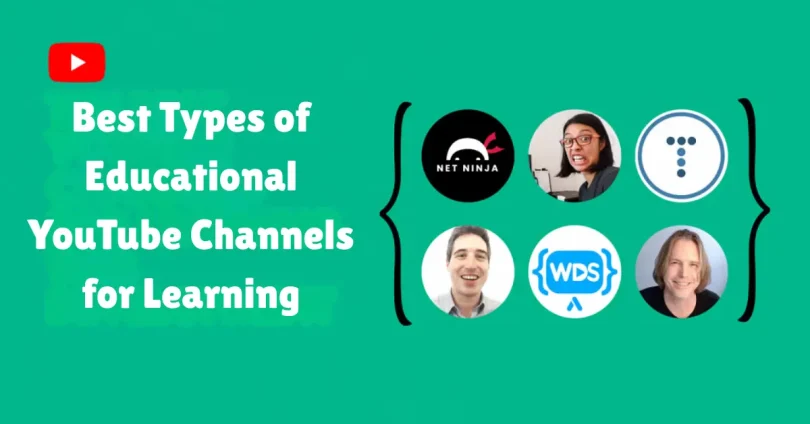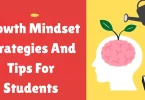In today’s digital age, learning is no longer limited to dusty books or quiet classrooms. Imagine you want to understand how black holes work or learn to bake a perfect chocolate cake—you no longer need to wait for a class or dig through endless books. Instead, you can turn to the internet, and more specifically, YouTube.
YouTube has become one of the best platforms for learning, offering interactive videos, step-by-step tutorials, and visual explanations that make even complex topics easy to understand. Whether you’re a student struggling with math, a professional looking to learn digital marketing, or just someone curious about history or science, there’s a YouTube channel for you.
Let’s explore the best types of educational YouTube channels for learning and discover how they can make gaining knowledge fun, engaging, and accessible anytime, anywhere.
1. Academic Learning Channels

Academic learning channels are perfect for students of all ages, from school children to university learners. These channels cover subjects like math, science, history, literature, and language learning.
Why they are useful:
- They simplify complex topics into bite-sized lessons.
- Many include visual examples, animations, and quizzes for better understanding.
- They offer flexibility to learn at your own pace.
Popular examples:
- Khan Academy: Offers comprehensive lessons in math, science, and economics.
- CrashCourse: Provides high-energy courses on history, literature, biology, and more.
- TED-Ed: Engaging animated lessons covering topics across education, philosophy, and science.
Tip: Use playlists to follow entire courses systematically rather than watching random videos.
You may also like to read this:
10 Best Productivity Apps For Remote Work Teams
Best 15 Free Noise Cancellation Apps For Mobile Phones
12 Best Free Mobile Scanning Apps For iOS & Android
12 Free Online Marketing Certification Courses List 2025
15 Practical Beginner Tips To Learn Python For Data Science
2. Skill Development Channels
Skill development channels are designed for people who want to learn practical and career-oriented skills. These may include programming, digital marketing, design, photography, music, cooking, or DIY crafts.
Why they are useful:
- They provide step-by-step tutorials for beginners and advanced learners.
- They help turn hobbies into marketable skills.
- You can often practice alongside the tutorial videos, making learning hands-on.
Popular examples:
- freeCodeCamp.org: Comprehensive coding tutorials from beginner to advanced levels.
- Tasty: Step-by-step cooking tutorials for all cuisines.
- PhotographyPro: Offers guidance on photography techniques and editing skills.
Tip: Follow a channel consistently and practice regularly; skill-based learning improves with repetition.
3. Science and Technology Channels
If you’re curious about how the world works, science and technology channels are perfect. They explain everything from space exploration and artificial intelligence to physics experiments and environmental science.
Why they are useful:
- They make complex scientific concepts easy to understand.
- Visual demonstrations help retain information better.
- They encourage curiosity and critical thinking.
Popular examples:
- Veritasium: Explains scientific phenomena through experiments and engaging storytelling.
- Kurzgesagt – In a Nutshell: Uses high-quality animations to explain space, biology, and technology.
- SmarterEveryDay: Focuses on scientific exploration and real-life experiments.
Tip: Take notes while watching and try simple experiments at home to deepen your understanding.
4. Educational Entertainment Channels
Learning doesn’t always have to be serious. Educational entertainment channels mix fun and learning through interesting facts, quizzes, challenges, and mind-bending experiments.
Why they are useful:
- They make learning memorable by combining fun and knowledge.
- Videos are often short and engaging, perfect for casual learning.
- Great for building curiosity and critical thinking skills.
Popular examples:
- Vsauce: Covers fascinating scientific questions and thought experiments.
- MinutePhysics: Explains physics concepts in short, animated videos.
- TED Talks: Inspirational talks that teach life lessons, science, and innovation.
Tip: Use these channels as a supplement to formal learning for motivation and curiosity.
5. Language Learning Channels

Learning a new language is easier when you have access to structured lessons, cultural insights, and practical examples. Language channels cater to beginners, intermediates, and advanced learners.
Why they are useful:
- Lessons include vocabulary, grammar, and pronunciation.
- Many channels provide real-life conversations and cultural context.
- You can practice listening and speaking skills through interactive exercises.
Popular examples:
- Duolingo: Offers simple lessons for multiple languages.
- Easy Languages: Provides real-world conversation practice with subtitles.
- BBC Learning English: Comprehensive lessons for English learners worldwide.
Tip: Combine video learning with daily practice, such as speaking or writing short sentences.
6. Personal Development Channels
Personal development channels focus on helping you grow professionally and personally. They cover soft skills, productivity, leadership, mindfulness, and study strategies.
Why they are useful:
- They teach skills that improve efficiency and decision-making.
- Motivational and practical advice can boost confidence and productivity.
- They often provide actionable steps for self-improvement.
Popular examples:
- Thomas Frank: Productivity, study tips, and personal growth strategies.
- Matt D’Avella: Minimalism, habits, and lifestyle improvement.
- Ali Abdaal: Study techniques, productivity hacks, and career guidance.
Tip: Apply what you learn in small steps daily for maximum impact.
7. History and Documentary Channels
If you enjoy stories from the past, cultural exploration, or understanding global events, history and documentary channels are ideal. They offer insight into history, politics, culture, and notable figures.
Why they are useful:
- They make history engaging with storytelling and visuals.
- Help develop a broader perspective of the world.
- Provide context for understanding current events.
Popular examples:
- History Channel: Documentaries on significant historical events.
- Biographics: Life stories of influential figures from all fields.
- National Geographic: Culture, wildlife, and exploration documentaries.
Tip: Take notes or discuss interesting topics with friends to retain information better.
8. Math and Logic Focused Channels
For learners who want to strengthen problem-solving skills, logic, and analytical thinking, math-focused channels are extremely helpful. They cover everything from basic arithmetic to advanced topics like calculus, statistics, and brain teasers.
Why they are useful:
- They improve critical thinking and analytical skills.
- Many use step-by-step explanations to solve complex problems.
- They often include puzzles and challenges to make learning interactive.
Popular examples:
- Numberphile: Fascinating videos about numbers, math concepts, and real-world applications.
- 3Blue1Brown: Explains advanced math visually and intuitively.
- PatrickJMT: Offers clear step-by-step math tutorials from algebra to calculus.
- MindYourDecisions: Math, logic, and puzzle-solving challenges for critical thinking.
Tip: Try to solve problems alongside the video to fully grasp the concepts.
9. Art and Creativity Channels
Art and creativity channels are perfect for learners interested in drawing, painting, graphic design, music, and other creative fields. They often provide tutorials, tips, and inspiration for building artistic skills.
Why they are useful:
- They help develop visual and creative thinking.
- Provide guided tutorials for beginners and advanced learners.
- Encourage experimentation and personal expression.
Popular examples:
- Proko: Professional drawing tutorials and figure drawing lessons.
- Draw with Jazza: Fun art tutorials for beginners and creatives.
- The Futur: Creative entrepreneurship, design, and business skills.
- Adam Neely: Music theory, bass lessons, and creative insights.
Tip: Practice regularly and follow along with tutorials to see tangible improvement.
10. Health and Fitness Learning Channels
Health and fitness channels combine physical activity with knowledge about nutrition, exercise science, and wellness habits. These channels are ideal for learners who want to improve their health or understand the science behind fitness.
Why they are useful:
- They provide guidance on safe and effective workouts.
- Explain nutrition, mental health, and lifestyle choices.
- Encourage a holistic approach to well-being.
Popular examples:
- FitnessBlender: Full workout tutorials and healthy living advice.
- Athlean-X: Exercise science, training tips, and muscle-building guidance.
- Mind Pump TV: Fitness education, myths, and practical advice.
- Yoga with Adriene: Yoga lessons for all levels focusing on mindfulness and flexibility.
Tip: Combine video guidance with a consistent schedule to see real improvements.
Conclusion: Best Types of Educational YouTube Channels For Learning
YouTube has revolutionized the way we learn. From academic subjects and skill development to personal growth and entertainment, there’s a channel for everyone. By exploring these best types of educational YouTube channels for learning, you can make your learning experience interactive, enjoyable, and highly effective.
So, whether you want to master a subject, learn a new skill, or just satisfy your curiosity, YouTube is your gateway to knowledge. Grab your headphones, open YouTube, and start exploring a world of learning today!
FAQs
1. Are YouTube educational channels reliable for learning?
Yes! Many educational YouTube channels are created by experts, educators, and professionals. However, it’s always good to cross-check information with textbooks or other credible sources for accuracy.
2. Can I learn a subject completely on YouTube?
While YouTube can provide excellent explanations and tutorials, combining it with practice, exercises, and other resources like books or courses ensures deeper understanding. For many subjects, it’s perfect for supplementary learning.
3. Which type of YouTube channel is best for skill development?
Skill development channels like freeCodeCamp.org, Tasty, or PhotographyPro are ideal. They offer step-by-step tutorials and hands-on practice for practical and career-oriented skills.
4. How do I choose the right educational channel for my learning needs?
Look for channels that:
Cover your subject of interest.
Use a teaching style that suits you (visual, audio, or interactive).
Provide structured playlists or series for systematic learning.
5. Are YouTube channels suitable for exam preparation?
Absolutely. Channels like Unacademy, Khan Academy Test Prep, and Magoosh offer structured lessons, solved examples, and exam strategies. They can supplement textbooks and coaching classes effectively.




